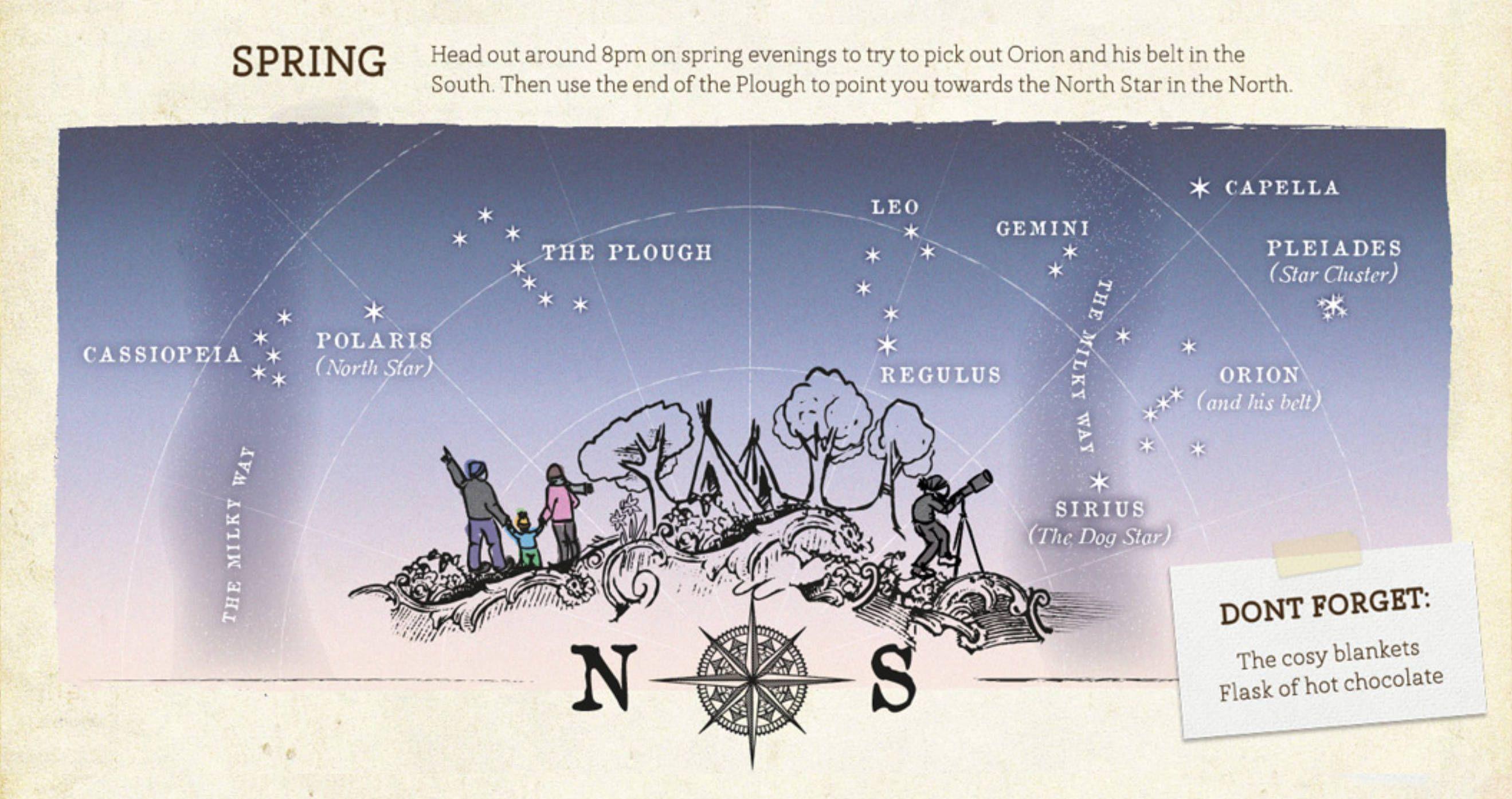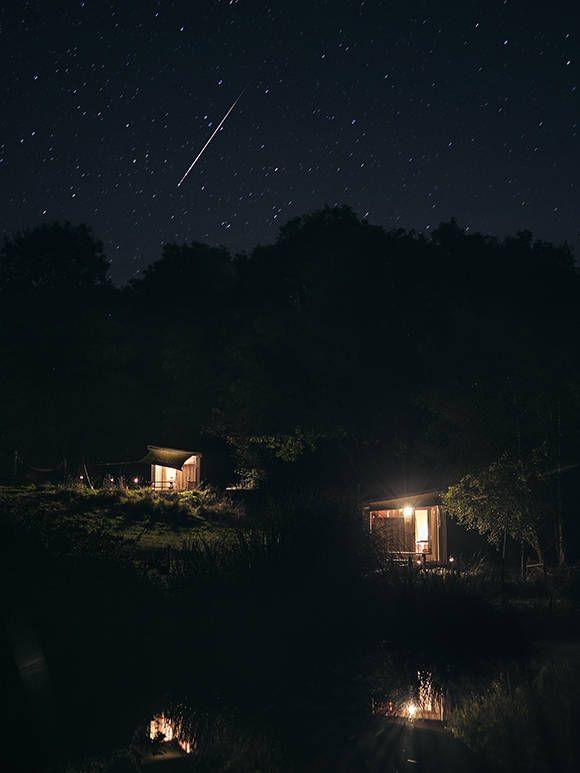A guide to stargazing at home
You might think that streetlights and the glow of people reading Canopy & Stars newsletters on their phones would blot out the stars, but amazingly, you can still see a few hundred almost no matter where you are. And when you do, even the faintest glow can be inspiring.
Research into the many powers of nature demonstrated that stargazing can instil a sense of perspective and grounding that has enormous benefits for our creativity and our outlook. It really is as if your mind opens up into the huge space above. Here are some simple tips for sitting back, looking up and chilling out:
1. Set up your observatory
Turn off your own lights and shield yourself from others around you as much as possible. It might mean lying right next to your garden wall or rigging up some kind of elaborate hat, but it’ll be worth it.
2. Wait for it
Let your eyes adjust. It’ll take 15 or 20 minutes for you to get used to looking for much smaller, fainter stimuli than you’re used to. You need your pupils to dilate as fully as possible and this is something that they will instantly retract from if there is suddenly more light, so make sure everyone knows not to flick the light and keep your phone switched off!
3. Build a telescope
First the lenses. Find some thin glass tubes and a strong flame... Only joking, we’re talking about the low-fi version of a telescope - toilet rolls. This is essentially a way of focusing your eye and blocking more surrounding light. Real binoculars are better, but this’ll definitely help and also make you look cool.
4.What to look for
Take a look at these rough charts to get you started in your star hunting and keep an eye out for the Eta Aquarids Meteor Shower, which might be visible on the 4th and 5th of May, some time after midnight. Failing that, it’ll be a full moon on the 7th and you can’t miss that, no matter how much background light you’re dealing with.

Bonus tips
- Keep warm - although it’s spring you’re likely to get cold sitting still. Get your layers on and get cosy.
- Something warming (a flask of tea or a wee dram) mightily improves the whole experience.
- Cloudy nights are the enemy - check the weather beforehand and if it's looking particularly cloudy, cut your losses.
- Wear sunglasses indoors before you go out. You’ll look daft and bump into things, but your dark adaptation will be quicker when you get outside.
- Make yourself a pair of red glasses to help improve your night vision. Eat two Strawberry Delights and put the wrappers over a pair of frames.











